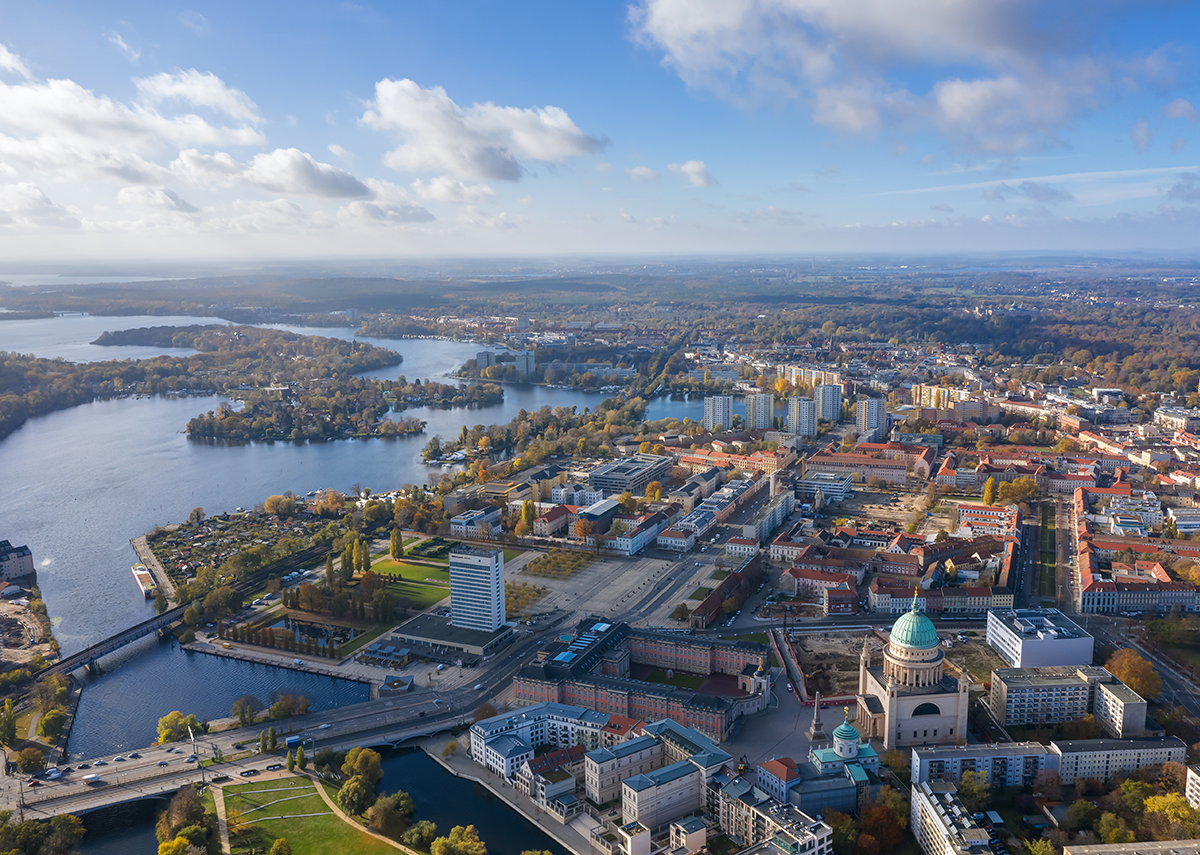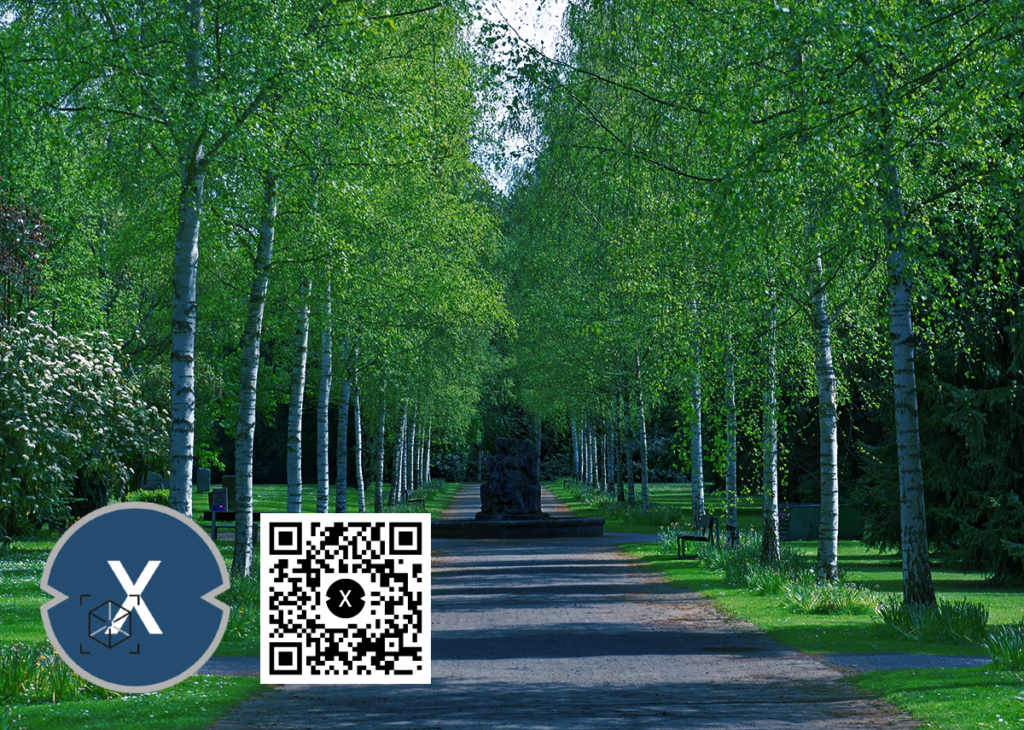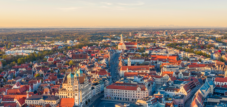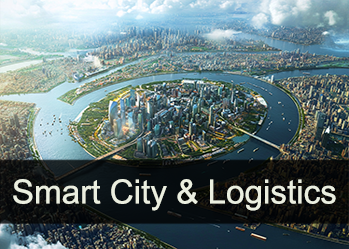City logistics and Smart City: Climate analysis Potsdam and the climate emergency - Smart Columbarium and the master plan for 100% climate protection
Language selection 📢
Published on: August 15, 2023 / Update from: August 15, 2023 - Author: Konrad Wolfenstein

City logistics and Smart City: Climate analysis Potsdam and the climate emergency – Image: immodium|Shutterstock.com
Green transformation: Potsdam's climate analysis and groundbreaking steps towards climate protection
➡️ The “Smart Columbarium” – the innovative solution that is still completely unknown in Europe and more
In times of advancing climate change, the sustainable development of cities is becoming increasingly important. Cities are not only major contributors to greenhouse gas emissions, but also offer great potential for innovative solutions to reduce these emissions. The city of Potsdam has approached this issue with a holistic approach by focusing on both city logistics and smart city initiatives.
Climate analysis Potsdam
One of the central measures was to carry out a comprehensive climate analysis for Potsdam. This analysis examined the impacts of climate change on the city, including heat islands, heavy rainfall and rising temperatures. The knowledge gained served as a basis for targeted measures to adapt to climate change. Green spaces were expanded to reduce heat islands and innovative drainage systems were implemented to minimize the impact of heavy rain.
Climate emergency
As an important step in combating climate change, Potsdam has declared a climate emergency. This symbolic step shows the city's commitment to making climate protection a central concern. The climate emergency requires the city to take increased action to reduce greenhouse gas emissions and advance the transition to a climate-neutral city. This has not only led to increased investments in renewable energies and sustainable mobility, but also to raising citizens' awareness of the urgency of climate protection.
Master plan 100% climate protection
The “Master Plan 100% Climate Protection” is a comprehensive concept that outlines the steps to achieve a climate -neutral city. It includes measures to promote renewable energies, to improve the energy efficiency of buildings, to promote sustainable mobility and to reduce waste. The plan serves not only as a timetable for the city, but also as a source of inspiration for other cities that pursue similar goals.
Cities become pioneers in the fight against climate change
With its initiatives in the areas of city logistics, smart cities, climate analysis and climate protection, the city of Potsdam has impressively shown how cities can become pioneers in the fight against climate change. Through a holistic approach, innovative projects and the will to change, Potsdam has not only strengthened its own resilience to the effects of climate change, but also created a role model for other cities that also want to work for a sustainable future.
Interesting solutions that we at Xpert offer cities, communities, municipalities and companies
➡️ City solar carport modules for photovoltaic parking spaces with translucent solar modules
➡️ City Pergolas, the ideal concept for the green smart city of the future
The "Smart Columbarium" as an innovative solution for space saving and urban development
A novel and exciting solution is the “Smart Columbarium”. This concept offers the possibility of saving up to 90% of the cemetery area and using the freed-up green space for other uses. This energetic and space-optimized burial site was developed by logisticians from Japan and Germany. The “Smart Columbarium” is an innovative way of burial where urns are stored in a space-saving and technologically advanced manner. This reduces the space required for traditional graves and frees up valuable green space. These areas can then be used as a valuable contribution to improving the living environment and quality of life of residents.
The combination of protecting and promoting existing green spaces, careful inner-city densification and innovative concepts such as the “Smart Columbarium” could help cities and municipalities find a balance between urban development and environmental protection. By specifically relying on green infrastructure and developing new ways of using land, the city can preserve the positive bioclimatic conditions in residential areas and at the same time improve the climate in heavily built-up regions.
Learn from the Japanese: 91% of the population already lives in urbanized areas
More about it here:
The Smart Park or Smart Columbarium concept
The Smart Columbarium concept describes the possibility of reducing the space required for cemeteries by an impressive 90%. This innovative solution creates valuable space that can be used to create green leisure and recreation parks. This measure aims to increase the culture of well-being in the community and to provide residents with an attractive environment for their leisure activities.
More about it here:
- Smart Park: New green parks thanks to Smart Columbarium
Access code / password : daifuku
Climate emergency in Potsdam: The city is setting an example for climate protection
On August 14, 2019, the city council of the state capital declared the climate emergency for Potsdam. A cross -party decision had been adopted with a large majority. Mayor Mike Schubert had been commissioned to check and implement various measures for climate protection in the coming months. "We want to make our contribution to protect the climate and not to keep human -made climate changes further," emphasized Mayor Mike Schubert. "This commitment has been in existence for a long time, and we acted accordingly - not least as a climate protection community with a master plan," added the mayor. The state capital Potsdam continuously expanded the electromobility of its administrative fleet, created new bicycle paths and parking spaces and ensured sustainability and energy efficiency during school construction by municipal real estate service.
Climate protection as a guiding principle
An essential part of the decision was the consideration of the climate effects in all future decisions. In order to enable a comprehensible and orderly process, Mike Schubert had developed a corresponding procedural proposal with criteria for evaluating the climate effects by March 2020 and presented the city council for approval. “A general preliminary evaluation of the climate effects would affect our cooperative work approach. We had to discuss it to ensure not only an orderly, but also for all understandable process. It was not very productive if we fought out about the effects and lost sight of the actual topic. Therefore, we needed defined criteria together, ”Mike Schubert explained to the city representative.
Potsdam on the way to a pioneering role
The decision to declare a climate emergency underscored the city of Potsdam's commitment to climate protection. The city has been pursuing a comprehensive strategy for years to reduce its CO2 emissions and increase the quality of life of its citizens. With the expansion of electromobility and the promotion of bicycle traffic, Potsdam relied on sustainable means of transport. At the same time, energy standards were implemented in school construction in order to increase energy efficiency and create sustainable educational facilities.
A clear signal for climate protection
The declaration of a climate emergency by the Potsdam city council showed a clear commitment to combating climate change and ensuring a livable environment for future generations. The planned measures, the consideration of climate impacts in decision-making processes and the continuous implementation of sustainable projects positioned Potsdam as a pioneer in climate protection. The city not only set an important example, but also created the basis for sustainable and future-proof development.
The declaration of a climate emergency in Potsdam was a significant step towards becoming a sustainable and climate-friendly city. The city council sent a clear signal for environmental protection and showed that protecting the climate was a central task that Potsdam faced with determination and commitment.
Masterplan 100 Climate protection until 2050: Potsdam's path to climate neutrality
The city of Potsdam had formulated ambitious goals to become almost climate neutral by 2050. Compared to 1995, the intention was to reduce greenhouse gas emissions by an impressive 92% and to reduce final energy consumption by 35%. In order to achieve these ambitious goals, a holistic strategy was used that encompassed all relevant areas of urban development.
The cornerstone: sustainable urban planning
A central cornerstone of this project was urban planning that was based on climate-relevant aspects. This included maintaining and expanding green spaces as well as promoting environmental awareness among the public. These measures formed the basis for a sustainable and livable Potsdam. In addition, energy-efficient building renovations were undertaken to reduce energy consumption in the city.
Transformation of the energy supply
In order to minimize dependence on fossil fuels, green district heating and the expansion of renewable energies were used. Increased use of solar and wind energy should diversify energy sources while further reducing CO2 emissions. This step was not only characterized by its environmental friendliness, but was also economically sustainable.
Rethinking the transport sector
The transport sector posed a particular challenge. The plans envisaged a gradual switch from fossil fuels to environmentally friendly alternatives. The focus was on electromobility and the expansion of local public transport. The aim was not only to reduce emissions, but also to create a more livable city for all citizens.
Conservation and awareness raising
The protection of natural habitats became more important. The preservation of wetlands and green spaces not only had ecological relevance, but also contributed to the quality of life in Potsdam. At the same time, the focus was on comprehensively raising awareness among citizens in order to raise awareness of the issue of climate protection in society.
Integration of business and political framework conditions
The project would not have been complete without the involvement of business. The intention was to make climate protection economically attractive. At the same time, the need to create political framework conditions at the federal level that supported these goals was recognized.
Challenges and outlook for the future
The target of reducing emissions by 95% and energy consumption by 50% by 2050 was undoubtedly a challenging task. The growing population and the preservation of historical heritage presented additional challenges. It was recognized that unforeseen technologies and forms of organization might be required to achieve these goals.
Summary: Together for a sustainable future
The master plan “100 climate protection by 2050” represented an ambitious project that influenced the entire urban development of Potsdam. Through sustainability, urban planning, a forward -looking energy supply, the traffic transition, nature conservation and intensive sensitization of the public, the basics for a livable and climate -neutral city were created. The close cooperation with the economy and the creation of suitable political framework conditions proved to be essential. In cooperation, the future was designed and made a significant contribution to global climate protection.
Potsdam: On the way to becoming a sustainable intelligent city
A look at the Sustainable Smart City in Potsdam
In recent years, the city of Potsdam has increasingly committed itself to the idea of a sustainable, intelligent city. With a focus on innovative technologies and environmental sustainability, Potsdam strives to be a pioneer in urban development. Two outstanding areas in which Potsdam can gain valuable experience are the concept of the Smart Columbarium and the integration of building-integrated photovoltaics and solar parking spaces.
Smart Columbarium: Digital technologies in the funeral industry
The introduction of a Smart Columbarium is a remarkable innovation in the funeral industry. Some cities have already recognized how digital technologies can make the management and maintenance of gravesites more efficient. By integrating sensors, Internet of Things (IoT) and mobile applications, relatives can access information about the burial site online, share memories and coordinate care services. This approach not only promotes transparency, but also enables more sustainable use of resources in cemetery maintenance.
Building-integrated photovoltaics: Sustainable energy production
The integration of photovoltaic systems into the architecture of buildings is an essential step on the way to sustainable cities. It has been recognized that this technology not only produces renewable energy but can also be aesthetically pleasing. Building-integrated photovoltaic modules serve as facade cladding or roofing material, thereby helping to reduce the carbon footprint. Potsdam can learn from successful examples of how the aesthetic integration of solar modules into the urban appearance can be achieved without compromising on energy efficiency.
Solar parking spaces: multiple use of areas
The creation of solar parking spaces is an innovative way to sustainably use unused areas in the city. Potsdam can learn from cities that are equipping parking lots with solar roofs to not only protect vehicles from the elements but also generate clean energy. Such multifunctional areas not only contribute to electricity generation, but also offer shaded parking and help promote electromobility.
Potential to learn from other cities
To support Potsdam's progress towards a sustainable smart city, the city should learn from other cities that have already successfully implemented similar initiatives. Cities like Copenhagen, Singapore and Amsterdam have implemented impressive smart city projects that can inspire Potsdam. For example, Potsdam could learn from Copenhagen's innovative approach to promoting cycling infrastructure or from Singapore's integrated approach to waste management.
Potsdam's path to a sustainable intelligent city
The city of Potsdam has taken significant steps towards a sustainable smart city. The introduction of smart columbariums, the integration of building-integrated photovoltaics and the creation of solar parking spaces are exemplary initiatives that Potsdam can learn from other cities. By sharing best practices and adapting to local conditions, Potsdam can further advance its vision of a livable, forward-looking city and pave a sustainable path for urban growth.
Climate Analysis: A Comprehensive Look at the Climate
Introduction to climate analysis
Climate analysis is an important scientific method for studying the climate in specific regions or globally. It includes different techniques and approaches to collect and analyze data that is crucial to understanding climate.
Climate study: research and findings
A climate study involves the in-depth study of climate patterns, weather events, and climate changes over a period of time. Scientists use various data sources to identify and interpret long-term trends and short-term fluctuations.
Climate data analysis: evaluation of historical records
Climate data analysis focuses on evaluating historical climate records such as temperature data, precipitation and humidity. By using modern statistical methods, patterns and trends in the data can be identified, providing important information for assessing the current climate.
Climate investigation: research into specific phenomena
In climate studies, the focus is on researching specific climatic phenomena such as El Niño, La Niña or climate cycles. The aim is to better understand the underlying causes and effects of these phenomena and to develop possible predictive models.
Climate assessment: Assessment of climatic conditions
Climate assessment involves a comprehensive assessment of the climatic conditions in a specific area. Various factors such as temperature, precipitation, air quality and solar radiation are taken into account. The results serve as a basis for climate-related decisions and measures.
Climatic analysis: Study of climate zones and regions
Climatic analysis involves the study of climate zones and regions around the world. By identifying similar climatic features in specific areas, comparisons can be made to identify similarities and differences between different regions.
Climate observation: monitoring current climate changes
Climate observation involves the continuous monitoring of current climate changes in real time. Weather stations, satellites and other technologies are used to collect and analyze data on temperature, precipitation and other relevant parameters.
Climate data evaluation: Use of big data and technology
Modern technology and big data analysis are used to evaluate climate data. Large amounts of climate data are collected to identify patterns and trends, helping to better understand the climate and make more informed climate-related decisions.
Climate recording: data collection for forecast models
Climate sensing focuses on data collection for the development of forecast models. Climate scientists continually collect data to build models that predict future climate changes and weather events.
Climate diagnosis: analysis of the causes of climate events
Climate diagnostics deals with analyzing and researching the causes of climate events such as heat waves, droughts or heavy rain. By understanding the underlying factors, preventive measures can be taken to mitigate potential impacts.
➡️ This comprehensive presentation of the various aspects of climate analysis highlights the importance of this research discipline for understanding and dealing with the challenges of climate change. From evaluating historical data to developing forecast models, climate analysis plays a central role in the effort to better understand our climate and find sustainable solutions for the future.
Energetic urbanization: Climate analyzes and the climate emergency declarations of cities, communities and municipalities

Energetic urbanization: climate analyzes and the master plan for 100% climate protection - Image: Xpert.Digital
Energetic urbanization refers to the process of making cities and communities more energetically efficient and sustainable. In view of advancing climate change and increasing global challenges related to energy consumption, energy urbanization is of great importance. Cities are responsible for a significant share of global emissions, but they also offer enormous potential to combat climate change and accelerate the transition to a low-carbon society.
More about it here:
Xpert.Plus Smart City & City Logistics Consulting with Konrad Wolfenstein
Xpert.Plus is a project from Xpert.Digital. We have many years of experience in supporting and advising on storage solutions and in warehouse optimization , which we bundle in a large network Xpert.Plus
I would be happy to serve as your personal advisor.
You can contact me by filling out the contact form below or simply call me on +49 89 89 674 804 (Munich) .
I'm looking forward to our joint project.
Xpert.Digital – Konrad Wolfenstein
Xpert.Digital is a hub for industry with a focus on digitalization, mechanical engineering, logistics/intralogistics and photovoltaics.
With our 360° business development solution, we support well-known companies from new business to after sales.
Market intelligence, smarketing, marketing automation, content development, PR, mail campaigns, personalized social media and lead nurturing are part of our digital tools.
You can find out more at: www.xpert.digital – www.xpert.solar – www.xpert.plus




























